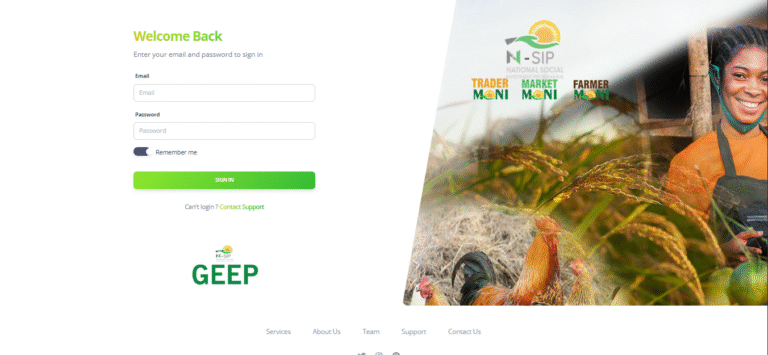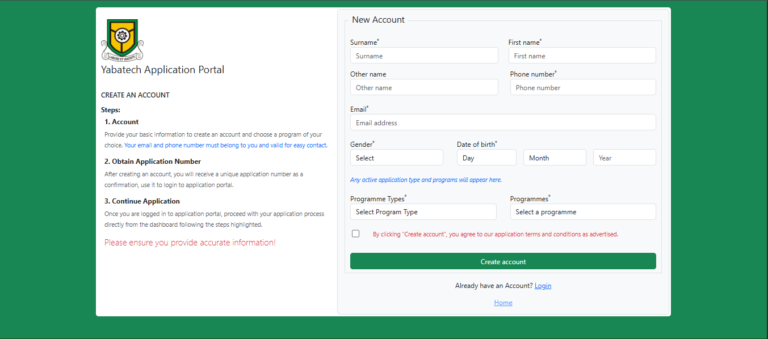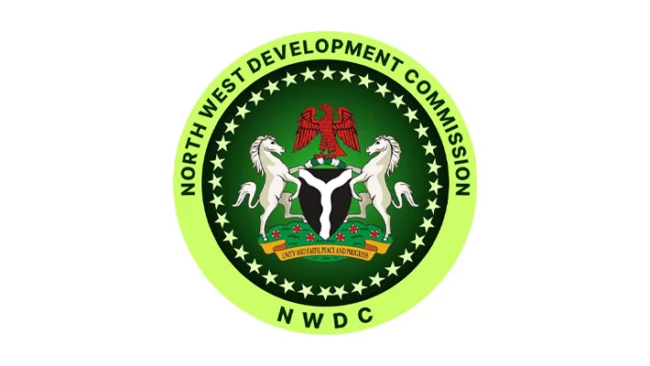Microsoft Internship Application 2025/2026 | Complete Guide
Microsoft Internship Application 2025/2026: Thinking about kick-starting a career in software, data, cybersecurity, product, design, or cloud? Microsoft’s global internship programs remain among the most competitive—and rewarding—early-career opportunities in tech. Beyond learning from world-class engineers and business leaders, interns work on real products used by billions, gain hands-on experience with Azure, GitHub, and Copilot, and access mentorship, relocation support, and a network that can meaningfully accelerate your career.
This complete 2025/2026 guide walks you through everything: what the programs look like, who can apply, the official portals, categories, eligibility, how to submit a standout application, benefits, and practical tips that align with Google AdSense policies (helpful, original, people-first content). By the end, you’ll know exactly how to position yourself, avoid common mistakes, and submit an application that’s both polished and persuasive.
Overview
Microsoft offers a portfolio of paid internships across engineering and business functions for students and recent graduates. Roles are typically full-time (40 hours/week) during the summer in many countries (May–September in the Northern Hemisphere), with off-cycle and winter opportunities in select regions (e.g., Australia, India, and parts of EMEA). Duration can range from 8–16 weeks for summer internships and up to 6 months for some co-ops.
Key program characteristics:
- Real impact: Interns contribute to production features, performance improvements, research, and customer solutions.
- Mentorship: Each intern has a manager and often a dedicated mentor/buddy.
- Learning & upskilling: Access to internal trainings, tech talks, and cloud learning paths (Azure, AI/ML, security).
- Inclusive culture: Strong emphasis on growth mindset, accessibility, and belonging.
- Conversion potential: High-performing interns are often considered for return offers or new-grad roles.
Common internship families:
- Software Engineering (SWE) / Research: Full-stack, systems, distributed systems, AI/ML, security.
- Program/Product Management (PM/PMM): Road-mapping, customer research, feature specs, GTM.
- Data & Analytics: Data science, data engineering, business analytics.
- Cybersecurity: Security engineering, detection & response, identity, privacy.
- Cloud & Solutions: Azure engineering, customer success, solutions architecture.
- Design & User Research: Product design, UX research, content design.
- Business Functions: Marketing, finance, operations, sales, HR, legal (region-dependent).
Countries Eligible
Microsoft recruits’ interns globally. Availability varies by role, visa policy, and local hiring plans, but typical hubs include:
- North America: United States, Canada
- Europe: United Kingdom, Ireland, Germany, Netherlands, France, Sweden, Switzerland, Spain, Italy, Czech Republic, Poland
- Middle East & Africa: UAE, Israel, Saudi Arabia, South Africa, Nigeria (and other markets with Microsoft presence based on business need)
- Asia: India, Singapore, Japan, South Korea, China (availability varies), Malaysia, Indonesia, Vietnam
- Oceania: Australia, New Zealand
- Latin America: Mexico, Brazil, Colombia, Chile (varies by year)
Tip: If you’re open to relocating, filter by multiple countries to increase your chances. Many postings specify whether visa sponsorship and relocation assistance are available.
Official Application Portal
The only reliable source for current openings is Microsoft’s official careers site for students and graduates:
- Microsoft Careers – Students & Graduates: https://careers.microsoft.com/students/us/en
- You can also navigate to the general careers site and filter by “University” or “Students & Graduates.”
Create a profile, upload a tailored résumé/CV, and set job alerts by keyword (e.g., “Software Engineering Intern,” “Program Manager Intern,” “Data Science Intern,” “Security Intern,” “Design Intern,” “Business Intern.”)
Avoid third-party “application” pages that ask for fees—Microsoft does not charge application fees.
Categories
While titles differ by team and location, you’ll see openings fall roughly into the categories below. Use these to plan your search keywords and tailor your résumé.
Software Engineering (SWE) & Research
- Focus: Coding, debugging, testing, system design, AI/ML experimentation, performance.
- Tech stacks: C/C++, C#, Java, Python, JavaScript/TypeScript, .NET, Go, Rust (team-dependent).
- Cloud: Azure services (AKS, Functions, Cosmos DB, Service Bus), CI/CD, DevOps.
Program/Product Management (PM/PMM)
- Focus: Customer discovery, requirements, specs, backlog, cross-functional delivery, business outcomes.
- Skills: Communication, analytical thinking, product sense, experimentation, A/B testing, accessibility.
Data & Analytics
- Focus: Statistical modeling, data pipelines, dashboards, experimentation, applied ML.
- Tech: Python, R, SQL, Spark, Databricks, Power BI, Azure Data Factory, Synapse, Fabric.
Cybersecurity & Privacy
- Focus: Threat modeling, identity & access, incident response, secure code reviews, privacy engineering.
- Frameworks: Zero Trust, OWASP, NIST, MITRE ATT&CK.
Cloud & Customer Solutions (CSA/SA)
- Focus: Designing cloud architectures, migrations, cost optimization, reliability, customer success.
- Skills: Azure architecture, networking, IaC (Bicep/Terraform), FinOps, SRE basics.
Design & User Research
- Focus: Interaction design, prototyping, information architecture, usability research, content design.
- Tools: Figma, Adobe CC, accessibility standards (WCAG).
Business Functions (varies by region)
- Marketing, finance, sales, operations, HR, legal, communications—great for candidates with business, communications, or quantitative degrees.
Eligibility Criteria
Exact requirements vary per posting, but most roles share common expectations:
Education & Academic Standing
- Enrolled in a Bachelor’s, Master’s, or PhD program (or a recognized equivalent) during the internship period.
- Graduation window typically after the internship
- Strong academic performance is helpful but not a strict cutoff; projects and impact matter.
Technical (for SWE/ML/Data/Security)
- Proficiency in one or more languages (e.g., C/C++, C#, Java, Python, JavaScript/TypeScript).
- Knowledge of data structures, algorithms, object-oriented design, testing, and version control (Git/GitHub).
- Familiarity with cloud platforms (Azure preferred) and basic DevOps/CI/CD.
- For ML/Data: statistics, experimentation, feature engineering, model evaluation.
- For Security: secure coding, threat modeling, identity fundamentals, incident triage.
Product/PM
- Demonstrated product thinking: problem framing, user empathy, prioritization, metrics, and storytelling.
- Comfort with ambiguity and cross-functional collaboration.
Design & Research
- Portfolio that shows end-to-end design process, accessibility, user testing, and measurable outcomes.
Work Authorization & Mobility
- Ability to work in the country of the internship (some roles support visa sponsorship/relocation).
- Willingness to relocate for the internship if required.
Soft Skills
- Growth mindset, communication, collaboration, ownership, and ethical, user-centric decision-making.
How to Apply (Step-by-Step)
Craft a Role-Specific Résumé
- One page (two for advanced grad students).
- Top third: role title you’re targeting, degree/program, graduation date, key skills (languages, frameworks, cloud).
- Experience/Projects: use action + impact bullets. Quantify outcomes.
- Include links to GitHub/portfolio and pin the most relevant repos or case studies.
Assemble a Focused Portfolio (for SWE/Design/Data)
- SWE: 2–4 repos demonstrating end-to-end features, tests, CI, docs, and a cloud deployment if possible.
- Design: 3–5 case studies with problem → process → solution → impact; show accessibility thinking.
- Data: Notebooks/pipelines with clean READMEs, EDA, model evaluation, and responsible-AI notes.
Apply via the Official Portal
- Create a profile, upload résumé, and set job alerts for your categories and locations.
- Submit early (many university roles open late summer to early fall for the following year).
Prepare for Assessments & Interviews
- SWE/Data: practice DSA, system design basics for interns, debugging, and code readability.
- PM: product sense, prioritization, metrics trees, customer scenarios, trade-offs, GTM.
- Security: fundamentals (OWASP Top 10), secure design, incident response scenarios.
- Behavioral: use STAR (Situation, Task, Action, Result) with measurable outcomes.
Nail the Internship Pitch
- Why Microsoft? Tie to mission (empower every person/organization), impact, and learning goals.
- Why this team? Reference relevant products (Azure, M365, Teams, GitHub, Copilot, Xbox) and user value.
- What you bring: a clear edge (e.g., research + production, open-source maintainer, hackathon wins, startup builds).
Follow Up & Keep Momentum
- Politely send a short note if you meet recruiters at events.
- Keep building—ship a small improvement to one of your projects and add it to your résumé before interviews.
Common mistakes to avoid
- Generic résumé not tailored to the posting.
- Listing responsibilities instead of outcomes.
- Typos, broken links, private repos in your application.
- Ignoring accessibility, privacy, or responsible-AI considerations in projects.
Related Posts:
- DAAD Scholarship Application
- Top 10 Fully Funded Scholarships for Africans in the US, UK & Canada
- Work Visa Sponsorship Jobs in USA
- Top 5 High Paying Online Degrees
Benefits of Microsoft Internship
While benefits differ by region and role, interns typically enjoy a compelling package:
- Competitive Pay: Interns are paid; rates vary by country and location.
- Relocation Support: Many roles include travel and housing assistance or a stipend, where applicable.
- Mentorship & Training: Structured onboarding, manager/mentor pairing, internal talks, and learning credits.
- Equipment & Tools: Laptop, software, and access to engineering resources needed to do your best work.
- Community & Inclusion: Intern events, leadership Q&As, hackathons, volunteering, and cultural clubs.
- Conversion Opportunity: A successful internship can lead to a return offer for a future internship or a full-time role.
- Career Capital: Brand recognition, credible project experience, and references that unlock opportunities across tech, cloud, AI, cybersecurity, and consulting.
Conclusion
Microsoft’s 2025/2026 internship cycle is an excellent gateway into high-impact engineering and business roles at global scale. The most successful applicants decide what they want, show evidence of impact, and apply early through the official portal with a tailored résumé and portfolio. Whether you’re targeting SWE, PM, Data, Security, Design, or Cloud Solutions, align your projects to the job description, quantify your outcomes, and demonstrate curiosity and ownership.
If you take one thing from this guide, let it be this: specificity wins. Specific skills, specific projects, specific impact. That’s what turns a good application into a memorable one.






